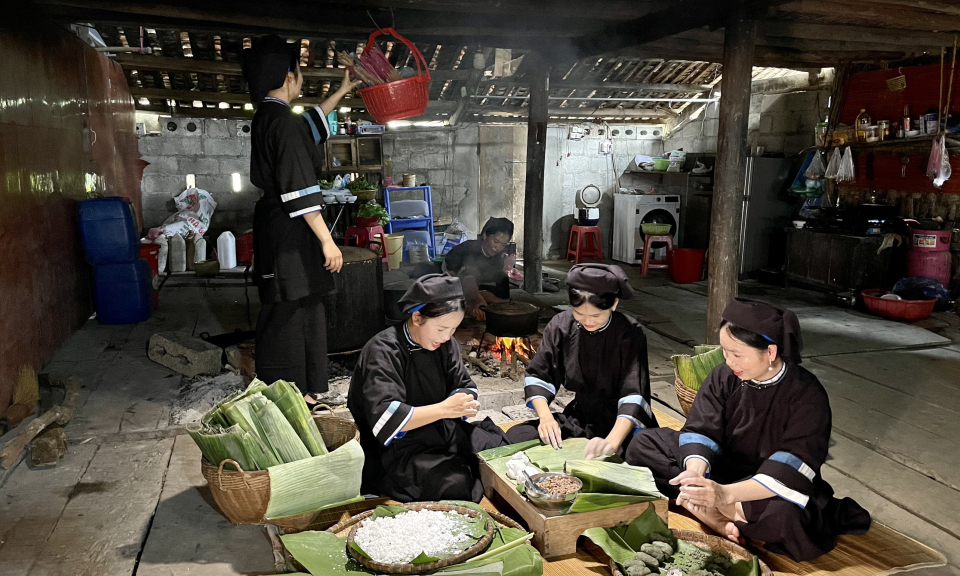
Discover the “Pay Tai” festival of ethnic minorities in Cao Bang, Vietnam
- on Aug 29, 2024 By: Phuong Mai NGUYEN
The "Pay Tai", celebrated by the Tay and Nung communities in Cao Bang, is more than just a traditional event; it is a vital occasion for honoring ancestors and reflecting on the communities’ history. Held during the middle of the seventh month of the lunar calendar, this festival carries deep spiritual significance. Along with the Lunar New Year and the Tao Mo Festival which is held on the third day of the third lunar month, Tet Pay Tai is one of the three most important festivals for the Tay and Nung people. These celebrations are deeply embedded in the cultural and communal identity of these ethnic groups, playing a crucial role in their spiritual lives.
What is "Pay Tai"?
Takes place on the 14th to 15th of the seventh lunar month, “Ram Thang Bay” is the second most important celebration in Vietnamese culture after the Tet Nguyen Dan or Lunar New Year. While “Ram Thang Bay” is known as the Vu Lan Festival among the Kinh people, the Tay and Nung in Cao Bang refer to it as “Pay Tai”.
The seventh month of the lunar calendar has profound significance for the Tay and Nung people, marking the end of the harvest season for Chiem rice and corn, and the completion of planting for the new season. During this time of the year, many festivals are organized to honor ancestors and pray for favorable weather and bountiful harvests.
In the religious and cultural practices of the Tay and Nung communities, “Tết Pây Tái" (Pay Tai Festival) is more than just a traditional event; it embodies deep values such as family, gratitude, and filial piety. This festival, held annually on the 15th of July according to the lunar calendar, is a special occasion for children to express their respect and gratitude to their ancestors.
But that is not all, as the Pay Tai Festival carries another deeper historical meaning. It serves as a poignant reminder of the bravery of Nùng Trí Cao, a national hero of the Tay people. Born into a local chieftain's family, Nùng Trí Cao was entrusted by the Lý dynasty with defending the northern regions of Đại Việt. He became renowned as a great warrior, leading numerous battles against the Song forces. He ultimately sacrificed his life in battle at Tống Quy, near the Tả Bùng gate in present-day Quảng Hòa District, also known as Cao Bằng.
The 14th day of the seventh lunar month was chosen as a memorial day for the warriors who defended their homeland to honor their heroic sacrifice. To commemorate this day, locals prepare a traditional dish called “péng tái” (Gai cake), to pay homage to the brave warriors.
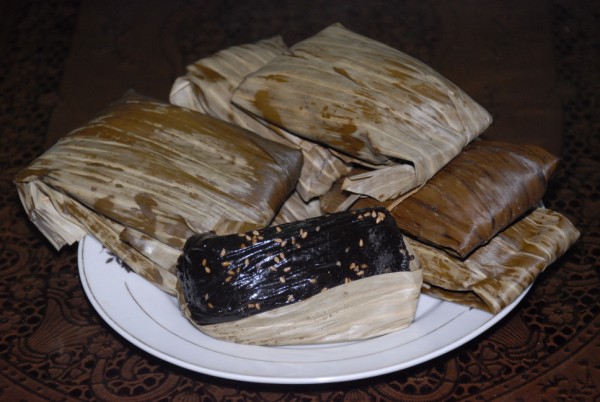
Péng Tái or Gai cake, a traditional dish for Pay Tai Festival
“Pay Tai Festival”: The traditional beauty of the Tay and Nung people
The “Pay Tai” Festival plays an important role in strengthening family bonds and community connections. It is a time-honored tradition where, through its rituals and festivities, children express respect and gratitude to their parents, uniting families and ensuring the preservation of Tay and Nung customs over time. Over the years, the significance of this event has extended beyond Cao Bang, reaching other northern provinces such as Bac Kan, Lang Son, and Ha Giang. It has become an integral part of the spiritual life of people throughout these regions.
The profound meaning of “Pay Tai Festival”
A deeply rooted belief in Tay and Nung culture is that after marriage, a woman is responsible for caring for her husband's family, including the important task of ancestor worship. “Ram Thang Bay,” or the "Pay Tai" becomes a significant time for a woman, as it is when she can come home to her parents with her family. This moment not only allows her to bond with her own family but also is an occasion for the husband to show respect to his in-laws.
.jpg)
In preparation for Pay Tai, the Tay and the Nung people prepare simple yet meaningful offerings to show their spiritual devotion and filial duty. Some of the traditional offerings include a pair of plump ducks, representing health and prosperity, and a pack of ten Gai cakes—a traditional delicacy that is an essential part of this festival. These offerings are a heartfelt expression of the children's love and respect for their parents, reinforcing the enduring bonds of family and tradition.
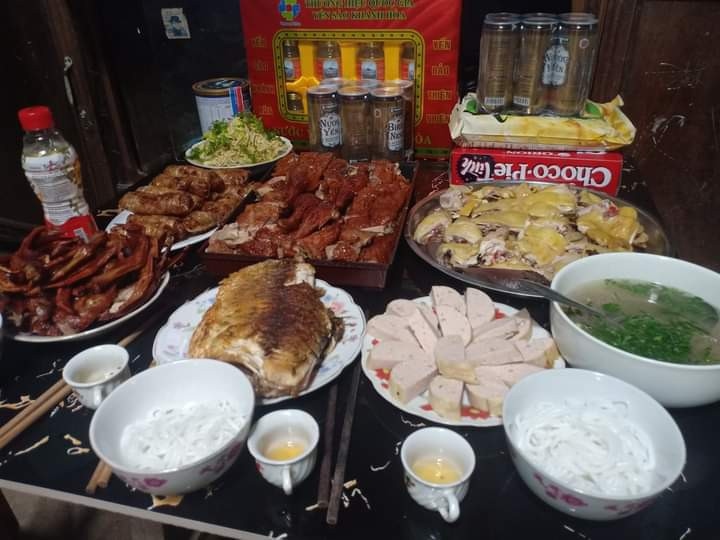
The Special Meal and Local Delicacies for Pay Tai
The Tay and Nung communities begin their Pay Tai celebrations on July 14th of the lunar calendar. The purchases for the festival are made many days before. From early morning, offerings are prepared to honor ancestors, including boiled chicken, Gai cakes, Dom cakes, pork, and duck.
On the 15th, the Tay and Nung families gather around a festive meal to enjoy some of their most cherished traditional dishes. One of the standout dishes is roasted duck with mắc mật leaves, which has gained popularity not only within the local communities but also among tourists.
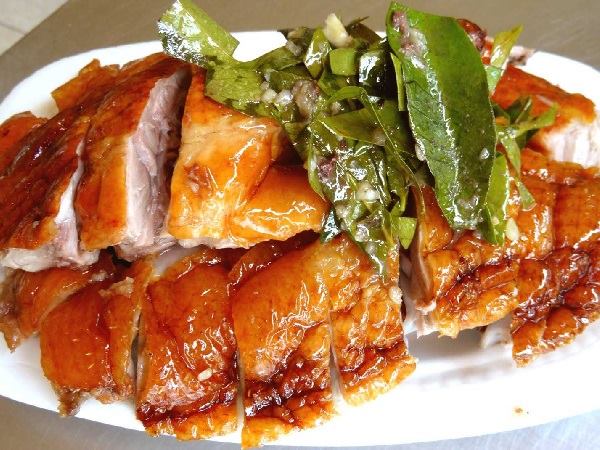
Roasted duck with mắc mật leaves represents the culinary artistry of the Tay and Nung people, as its preparation requires both skill and attention to detail. After cleaning, the duck is seasoned with various spices, and fresh mắc mật leaves, which are a crucial ingredient, are stuffed inside. Finally, before roasting, the duck is coated with wild honey, giving the skin a beautiful golden color, and enhancing the aroma of the mắc mật leaves.
In addition to roasted duck, another specialty enjoyed during “Ram Tháng Bảy” is white noodles served with duck and bamboo soup. The local saying, "Bươn Chiêng kin nựa Cáy, bươn Chất kin nựa Pết," which translates to "eat chicken in the first lunar month, and duck in the seventh," reflects the culinary traditions that are deeply embedded in this community.
Spreading humanistic values
More than just a traditional event, Pay Tai festival embodies numerous humanistic values. During this period, every Tay and Nung person reflects on their homeland and ancestors, expressing gratitude to those who fought to protect their motherland. It is also a moment for families to reunite, providing children with the opportunity to demonstrate their filial piety to their parents and ancestors.
Pay tai festival has become the most important event for the Tay and Nung people, celebrated for its special values of honoring ancestors and preserving cultural heritage. Its significance continues to grow, not only in Cao Bang but also in neighboring northern provinces like Bac Kan, Lang Son, and Ha Giang. The 15th of July remains a powerful symbol of love and gratitude within the Tay and Nung communities.
TOLUNHA
Related articles:
>> The 8 Best Things to See and Do in Cao Bang
>> 10 Days in Vietnam: List of Itineraries for Every Traveler
>> 15-day Vietnam Tour: Travel itineraries for all types of traveler
 Español
Español Français
Français







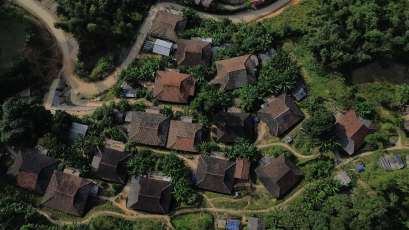
.JPG)

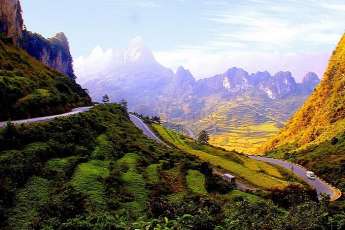









HerbertPhomaMS
on Oct 19, 2025Lilyan Cuttler
on Oct 15, 2025Avenue17XC
on Sep 14, 2025Avenue18JL
on Jul 21, 2025Judi Haigh-Smith
on Jun 29, 2025